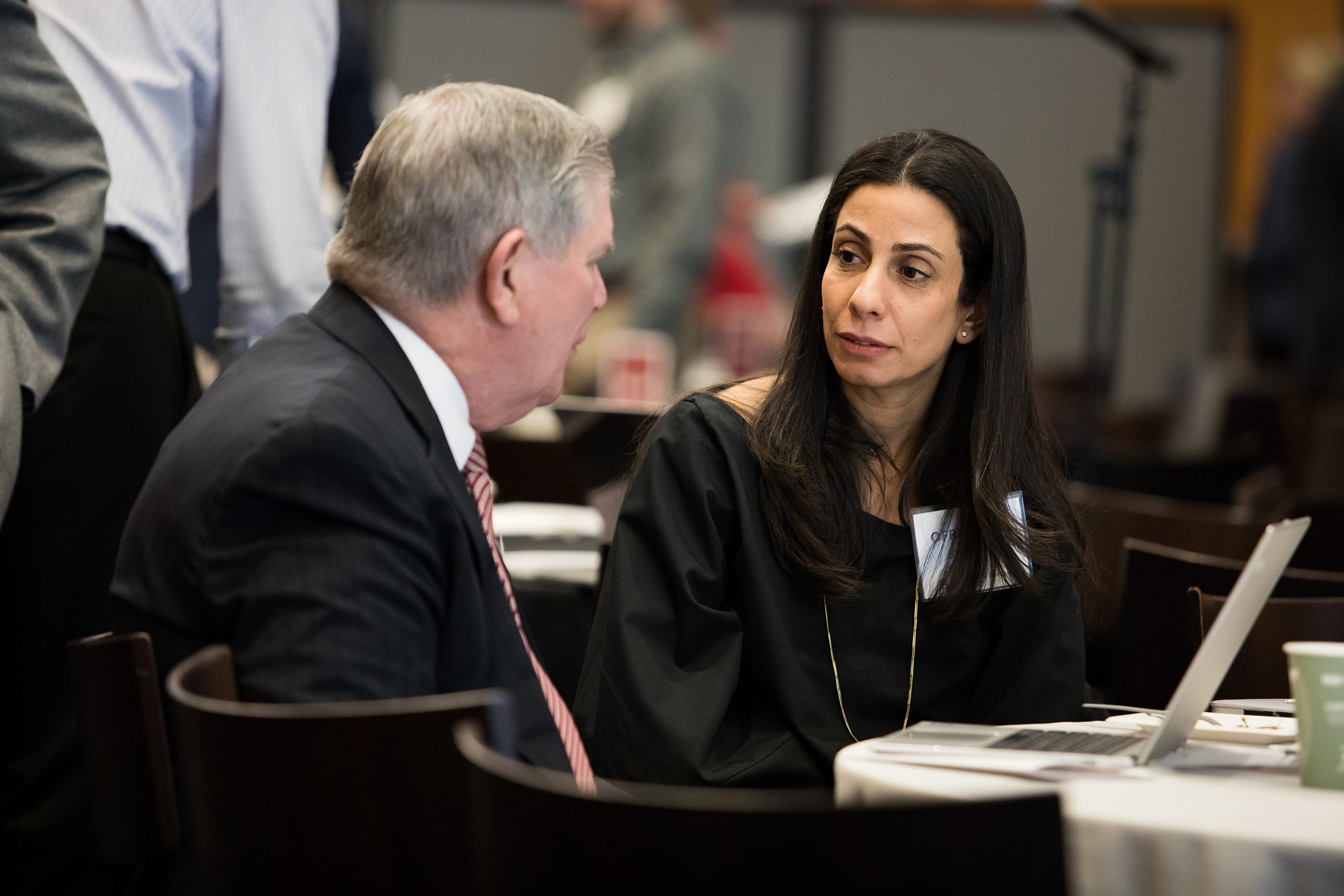Dave Schoch and Ofra Bazel-Shoham and the 2019 Impact Summit
Researchers and industry professionals have so much to offer one another. Scholars gain access to high-quality data and real problems to solve, and industry receives a research driven lens to examine some of their on-the-ground problems.
But while these collaborations are becoming more common, there are still challenges that need to be overcome.
The Fox School’s Translational Research Center (TRC) recently hosted the third annual Impact Summit, an event aimed at bringing together researchers, business professionals and thought leaders to discuss pressing issues. This year, the discussion centered on the challenges and opportunities of industry-academia collaboration.
Here are four big takeaways from the summit that can help researchers and academic institutions encourage this kind of collaboration.
- Align the incentive structures.
Scholars at research institutions are already asked to balance a demanding workload. Between conducting research, teaching classes and administrative busywork, it can be difficult to find time to translate their research into the language of business.
While researchers may primarily focus on submissions to top-tier academic journals, many business leaders do not have access to these channels, barring them from staying up-to-date on the newest trends and most recent models.
Bob Allen, president-elect of the American Accounting Association, discussed the importance of publications and presentations in practitioner-focused journals and conferences. Academic institutions need to recognize the value of translational work and reward it as they do for scholarly publications. “It would be very helpful if we have broader recognition for work that could benefit society, social contexts, in research,” says Allen.
Allen highlighted the Wildman Medal as one prominent example. Presented by the Deloitte Foundation, this major research award is given to papers that make the greatest contribution to the field of public accounting, specifically for research that has “practical implications… [for] the relatively near future.”
In other words, scholars are not done after publishing their article. After celebrating their publication, researchers should consider the many ways to distribute and publicize this information—and institutions need to reward that work.
- Speak the same language.
Despite an appetite for these kinds of collaborations, one key component of any successful collaboration is a common vocabulary.
Publishing in outlets aimed at practitioners can take a different set of language skills than publishing in peer-reviewed journals. Academic language is useful for maintaining precision and rigor, but it is often inaccessible to unfamiliar audiences.
“If we want the rigorous research we conduct as academics to make a real impact, it’s important to translate the academic findings to a language that is understandable by a broader audience.” says Monica Wadhwa. To achieve this objective, last year, the Fox School launched the Knowledge Hub to try to tackle this issue head-on. As a repository of translational research, the Knowledge Hub aims to make scholarship more accessible to practitioners by putting research into more accessible language, defining key takeaways and crafting compelling narratives.
In addition to language, scholars should consider the role that different formats can play in disseminating research insights to a broader audience. Blogs and podcasts have become popular ways to spread information about research to a receptive audience.
Anne Kleffner, president of the American Risk and Insurance Association (ARIA), highlighted ARIA’s social media initiative focused on spreading word from members to industry. Many scholarly journals such as the Journal of Marketing Research, the flagship journal from the American Marketing Association, have also tuned their social media presence to ensure their publications reach a wider audience.
- Make the first move.
Like all great partnerships, these collaborations don’t appear out of thin air. They take time, patience and continued effort to cultivate. But before all of that, they need a connection to ignite the spark.
Matt Weingarden, vice president of the American Marketing Association (AMA), Communities & Journals, encouraged interested scholars to not be afraid to seek out industry partners, which he has seen on both sides.
“On the scholarship side, we’ve seen anxiety about getting industry to read their work. On the industry side, there’s anxiety about getting scholars to write about their problems.” The only way to get around this is to make the first call.
Likewise, Andreas Rothe, national chair of Financial Executives International, encouraged business leaders to reach out to professors.
“It’s only through engagement that you go outside of your comfort zone and can benefit from the other sides’ ideas,” says Rothe.
- Encourage partnerships between industry and associations.
Partnerships between industry and academic associations can ensure insights cross the aisle. Business and industry leaders are frequent attendants at academic conferences; researchers should feel just as comfortable attending industry conferences.
Philip Borba, principal and director of economics consulting at Milliman, emphasized the importance of these partnerships for making sure practitioner models are grounded in the most recent research.
“It’s too easy to say machine learning and artificial intelligence are showing results in the black box,” says Borba. “Academics can keep us in line to do things that both get results and make sense.”

